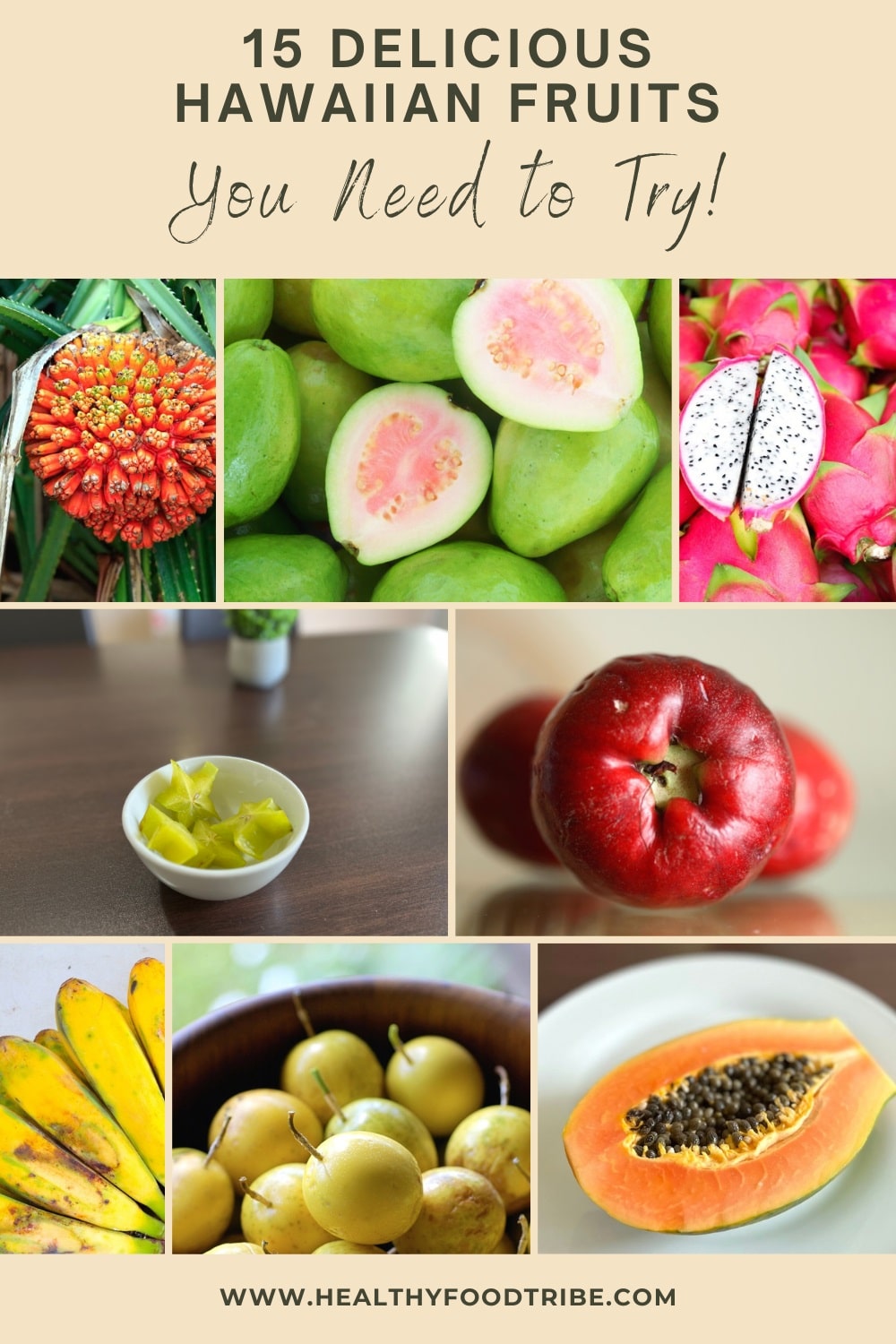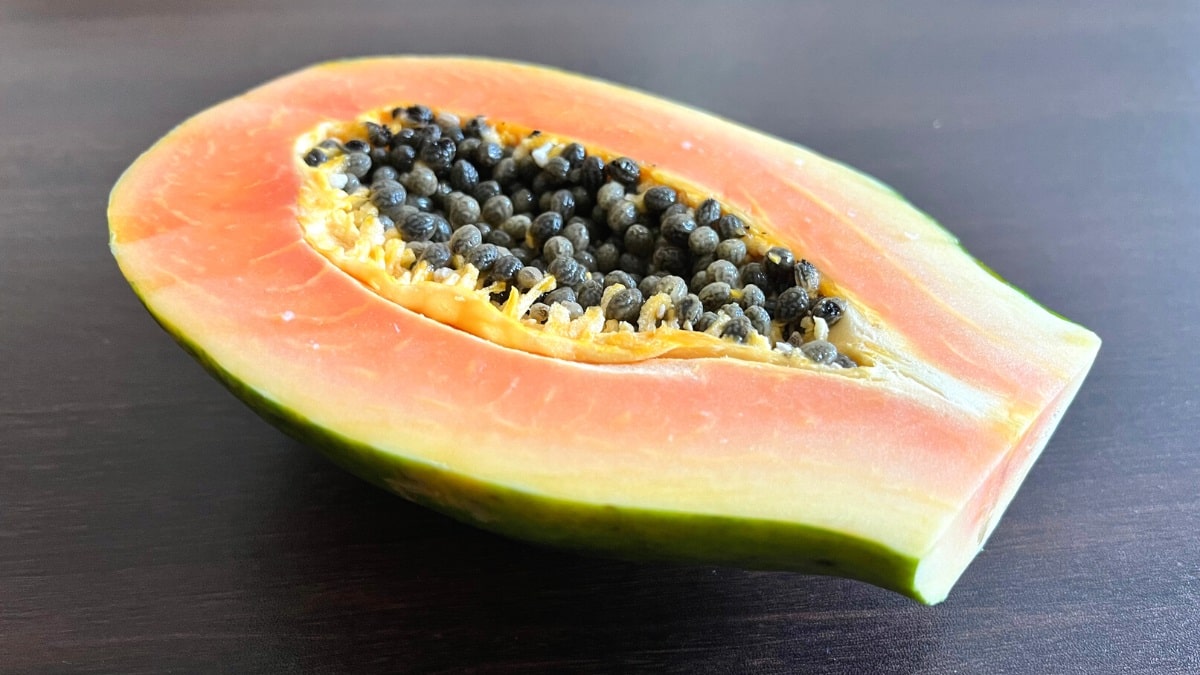Last updated: April 12, 2024
This guide shares 15 unique and delicious fruits from Hawaii, including tips on how best to find, prepare, and consume them.
The islands of Hawaii are well-known for their variety of fresh tropical fruit. Interestingly, very few of the fruits you’ll find in this state are native to the region.
Some are “canoe plants” brought to the islands by the first Polynesian settlers. Most showed up much later in history but are now grown widely across the state of Hawaii.
Below are 15 of the best Hawaiian fruits that span the spectrum from native throwbacks to more recent cultivars that have become commonplace.
Read my guide to the most traditional Hawaiian dishes with a list of delicious staples, from colorful desserts to tasty cooked meat and fresh raw fish.
1. Apple Bananas
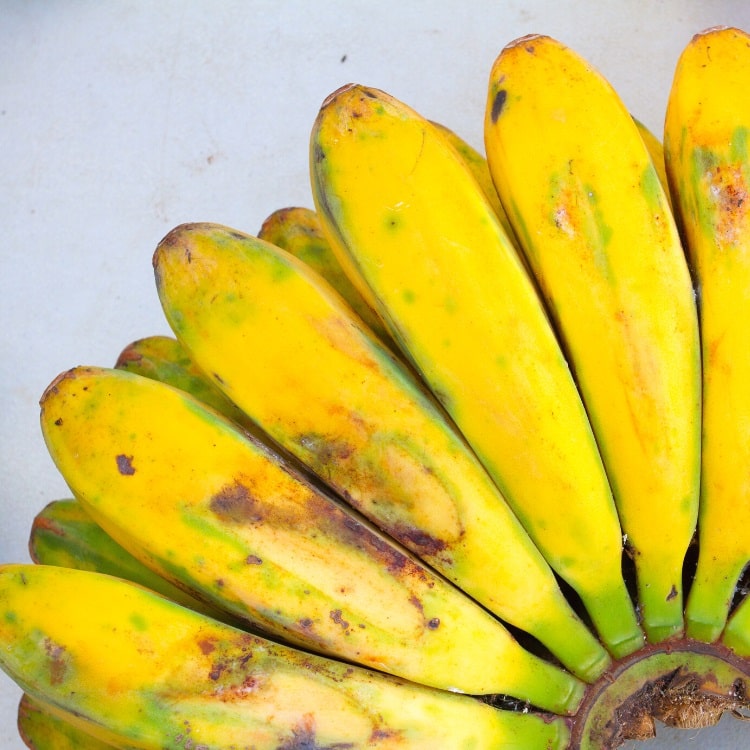
Bananas have long been a part of Hawaiian culture. The first Polynesian settlers brought banana trees to the islands over 1400 years ago. Today, these trees, which are actually giant herbs, are widely cultivated here on large plantations as well as in backyards.
Many of the same types of bananas you can find at the grocery store are grown in Hawaii. But one you can’t get unless you make the trip across the Pacific is the apple banana. Don’t let the name fool you; these are true bananas. But their flavor is less starchy and much brighter. They taste somewhat like a crisp Gala apple, but with the soft texture of a banana.
Apple bananas are much smaller than standard cultivars and have more brown on the peel when ripe. In fact, their tendency to go from green to brown in a matter of days is why you won’t find them on the mainland; these cuties simply do not last long enough to travel.
2. Dragon Fruit
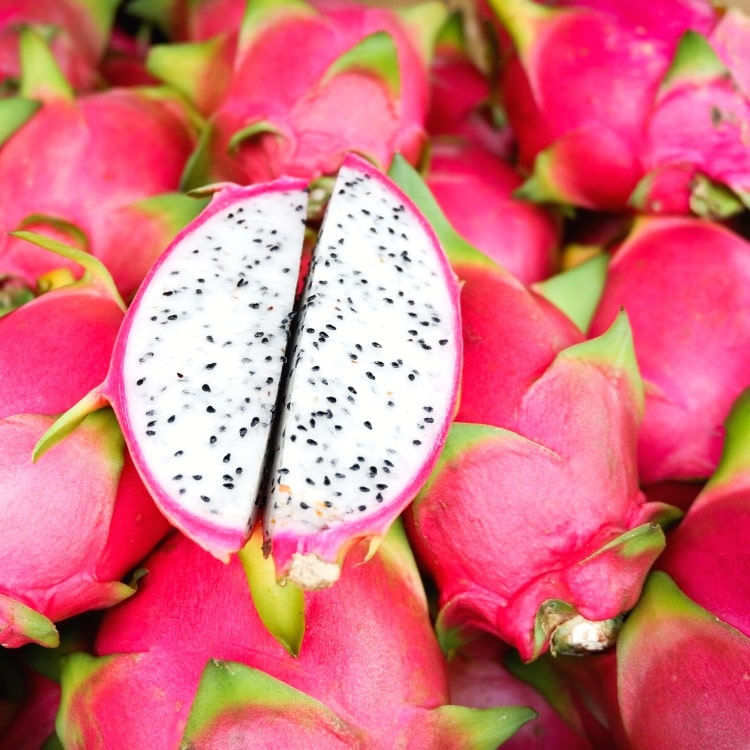
Dragon fruit, or pitaya, is originally from Central and South America. The fruit gets its name from the scale-like green protrusions on the bright pink or yellow skin. Their oblong shape and interesting texture give them the look of a dragon’s egg.
Given that scaley appearance, it shouldn’t surprise you that these fruits grow on cactuses, not trees. Dragon fruit cactuses climb up surfaces similar to how vines grow and can be seen scaling fences and trellises across Hawaii.
Dragon fruits come in three distinct varieties. The yellow fruits have white flesh and long spines that are usually trimmed before harvesting. The pink-skinned varieties can have white flesh or fuchsia flesh, depending on the type. All taste very sweet and fragrant with perfumey undertones.
Read my guide on how to cut and eat dragon fruit, including recipe ideas and practical tips.
3. Guava

There are a huge variety of guava trees out there, and many of them grow wild in Hawaii. The fast-growing, shrubby guava tree is considered invasive in many areas of the state. While they have been growing in Hawaii for at least 200 years, they are native to Central America.
The common guava fruit varies in size and texture. Some are round, while others are more pear-shaped. And the skin can be smooth or rough, like a lime. Strawberry guava, one of the most popular types on the island of Kauai, is dull red in color, but most guava cultivars are light green. The flesh inside these fruits can be white or pink.
All guava varieties have a sweet, pleasant flavor somewhere between a strawberry and a pear. They are commonly used in smoothies and juices, and as a flavoring agent for ice cream and desserts.
Learn more about this exciting fruit in my guide to eating guava, with lots of practical tips, recipe ideas, and much more.
4. Hala
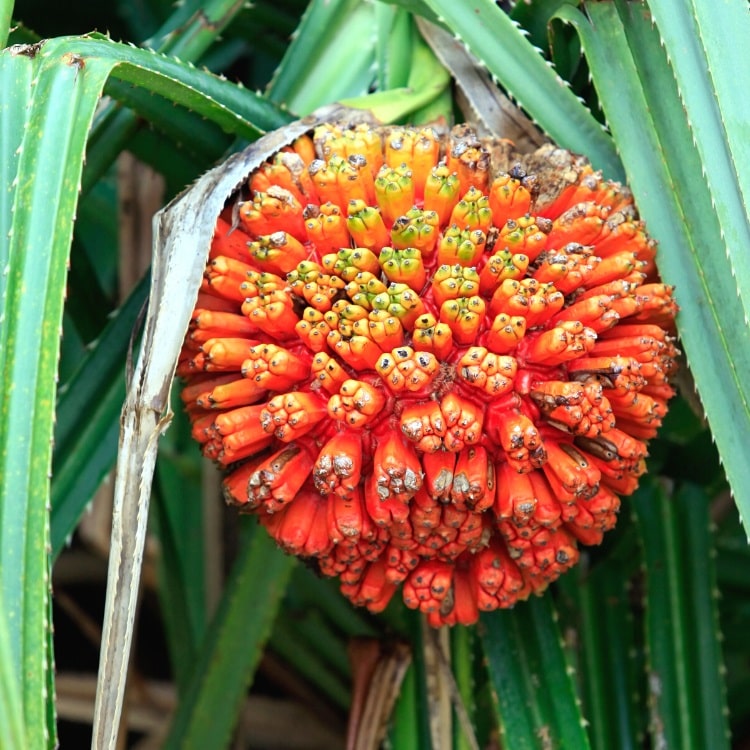
Hala is one of the only fruit-producing plants believed to be native to the islands of Hawaii. That is, research indicates this plant existed here long before humans arrived. Hala grows naturally throughout Polynesia and spreads readily via ocean currents.
The hala fruit looks a lot like a pineapple, with multiple conjoined “berries” that create a large, rough, oblong fruit. In fact, the common name for this plant in Hawaii is “tourist pineapple”. But unlike true pineapples, which grow on low-growing bromeliad plants, halas grow on tall trees.
Getting to the juicy flesh of a hala fruit takes some work. The woody phalanges, or keys, are attached to a hard center pit. The outside of these sections is green or yellow when ripe, and the inside is pink, orange, or yellow, depending on the cultivar.
The keys look like large candy corn kernels when separated from the fruit. The edible pulp is inside the kernels and must be sucked out or through the ends or cut and harvested. Hala has a mild, sweet flavor with notes of pineapple, mango, and jackfruit.
5. Lilikoi
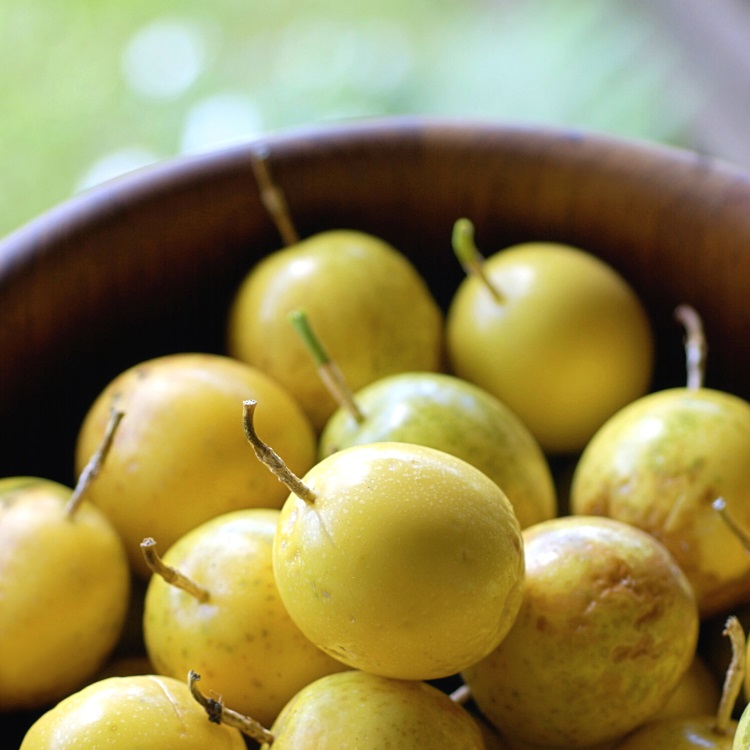
Lilikoi is the Hawaiian word for purple passion fruit. These popular but hard-to-find tropical fruits have been growing on the islands for over a century. While they first arrived in Hawaii from Australia, they’re actually native Brazilian fruits.
Purple passion fruits are palm-sized round fruits that feature a thick but malleable rind that protects the gooey pulp inside. Each sack of gelatinous, yellow pulp covers a large edible seed, giving the flesh a texture somewhat like raspberry jelly.
Despite the odd texture, lilikoi is worth hunting down. The flavor is sweet with a bit of tartness and heavy undertones of perfume. They are fun to eat raw and are often added as a topping to shave ice, ice cream, and other desserts.
Lilikoi is high in vitamins and minerals, and the edible seeds bring a good deal of fiber to the table. Passion fruit trees are often kept in gardens and grow wild in higher-elevation forests on the islands.
6. Longan
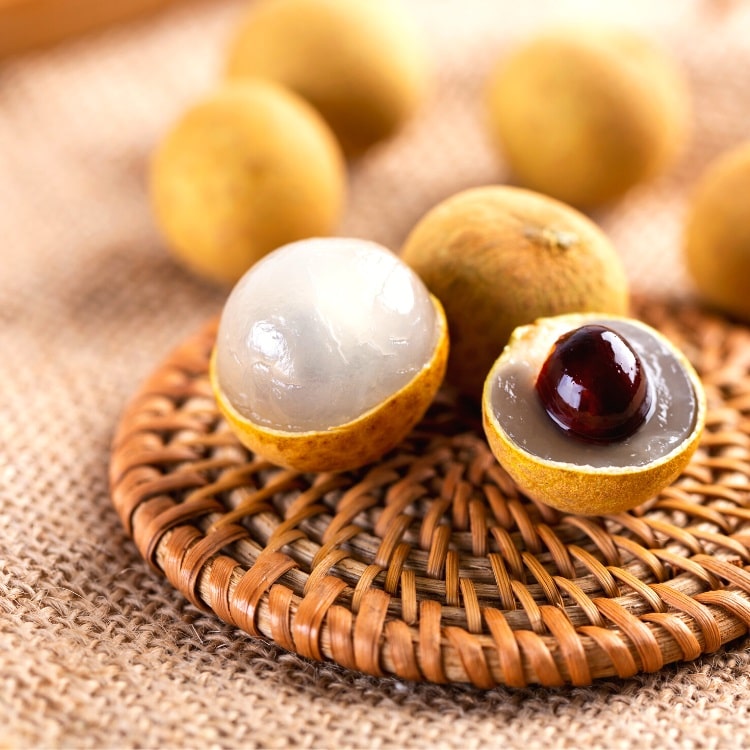
One of the most unremarkable-looking fruits on this list of Hawaiian fruits is the longan. These little, grape-sized berries grow in bunches and have dull tan skin. But don’t think that doesn’t mean this sweet tropical fruit is worth overlooking.
Inside the thick, bland skin of the longan is translucent flesh, very similar to that of lychee fruit. This flesh is firm but easy to bite through. And has a wonderfully aromatic flavor somewhere between lychee and melon.
Longans are native to tropical Asia. It traveled along with Asian migrants to Hawaii in the early 1900s. Today, this plant is cultivated throughout the state.
It is even possible to find special Hawaiian cultivars that were bred for this climate. One of the best examples is the Kohala longan tree, which produces large, juicy fruits that taste like butterscotch.
7. Lychee
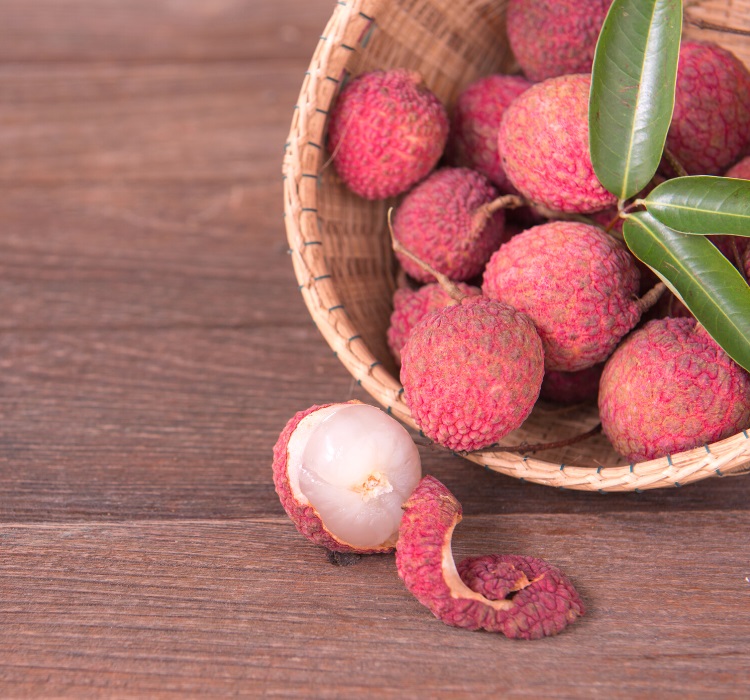
A close relative of longan is lychee, a popular flavoring and fruit in many Asian cultures. Like the former, this unique fruit was brought to the Hawaii islands along with Asian immigrants who wanted the familiar flavors of home. The first tree was planted in Honolulu in 1873 and is still alive today.
The rough, red berries of the lychee look somewhat like a strawberry. The hard, leathery skin can be peeled back to reveal translucent white flesh around a large black pit. The flavor of lychee flesh is very sweet, with notes of grape and rose. The small fruits are frequently eaten raw but can also be used to flavor alcoholic beverages, ice cream, and smoothies.
While this popular Asian fruit is not native to Hawaii, these trees are well adapted to the climate. They grow in gardens, parks, and forests throughout the islands.
8. Mango

Mangoes are large stone fruits that vary widely in shape, color, and size depending on the cultivar. Most varieties are oblong, about the size of an adult’s hand, and ripen from green to red or yellow. The flesh beneath the thick skin is bright yellow or orange and smooth and juicy.
Native to Northern India, mangoes first made an appearance in Hawaii in 1824. Today, there are hundreds of cultivars that grow throughout the islands. Mango trees, which can reach heights of over 100 feet, are common landscaping trees in parks and yards.
Mango flesh is slippery, fragrant, and very sweet, with notes of citrus and melon. They are commonly eaten raw, used in smoothies, or sliced and added to fruit salads and desserts. Mangoes are higher in sugar than many fruits but are also loaded with nutrients.
9. Mountain Apple
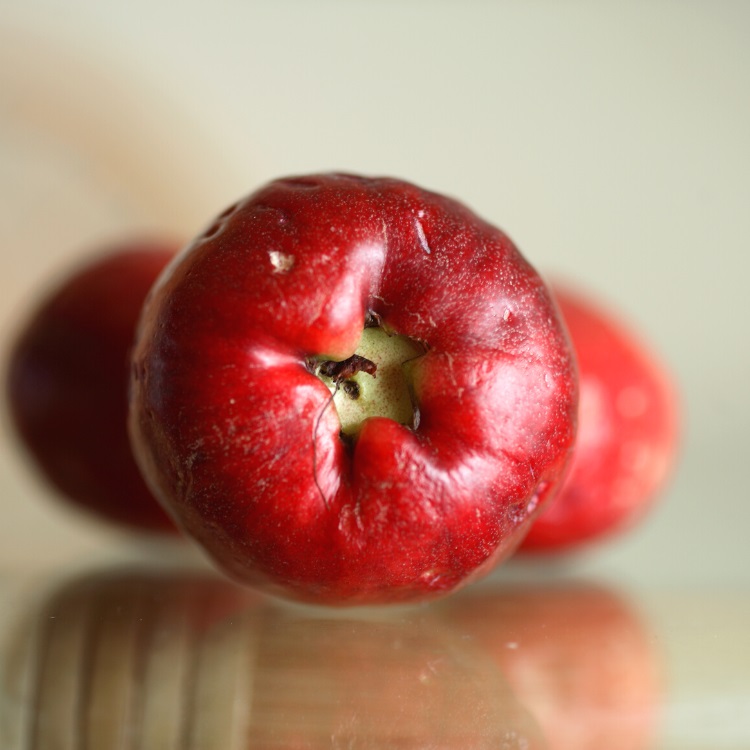
Mountain apples are not apples at all, but rather a relative of the guava. These bell-shaped fruits more closely resemble pears than apples. The flavor is also more pear-like, with a touch of added sweetness and floral essence.
These deep red fruits have white flesh which is most often eaten raw. The edible peels can be boiled to create a red syrup to color desserts. The crisp texture and high water content make mountain apples good candidates for pickling and dicing into salsas.
Mountain apples, known in Hawaiian as ‘Ōhi’a ‘ai, were canoe plants that arrived on the islands along with the first settlers. Although the plant is native to Malaysia, they are commonly called “Hawaiian mountain apples”. Some may also call them “Malaysian apples”. Today, they grow throughout the wilds of the islands, especially in mountain valleys.
10. Noni
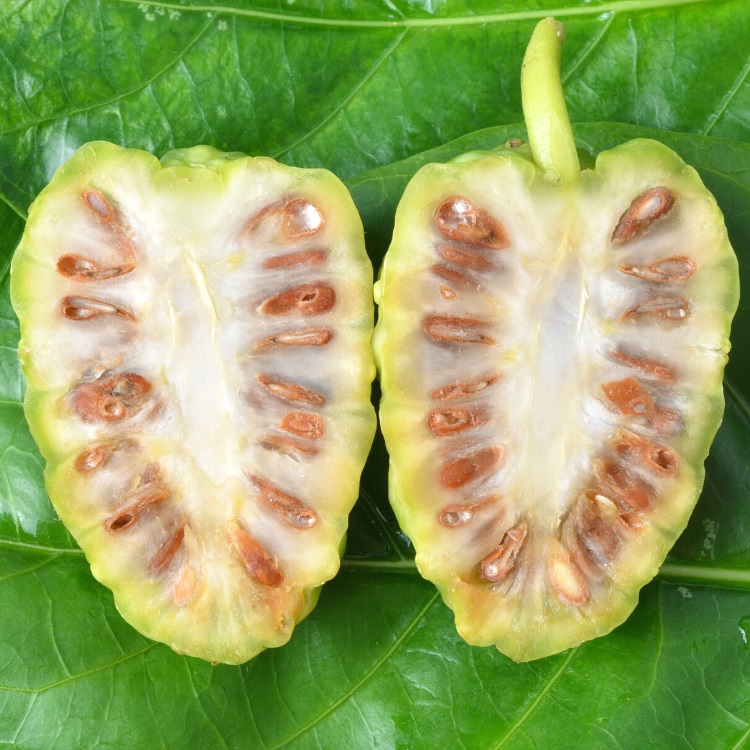
Another canoe plant that arrived along with the first Polynesian settlers in Hawaii is noni. Also known as Indian mulberry and cheese fruit, this nearly-Hawaiian native is as strange looking as they get. Noni fruit is about the size of a human palm and resembles a smooth pinecone. The skin is lime green to white and contains numerous knobby eyes.
This odd fruit is widely considered a “famine food”. Its strong, acrid odor and Limburger cheese-like flavor make it less than appetizing when other options are available. Despite this, many Polynesian cultures, including early Hawaiians, used it as a staple food.
The fruit’s popularity with early settlers likely had a lot to do with the alleged medicinal uses. The roots of the plant were also widely used as a yellow dye. While you may not want to make an extra trip to pick up some noni, it is worth tasting if you find yourself at a Hawaiian market that sells it. There really isn’t anything else like it in the world.
11. Papaya
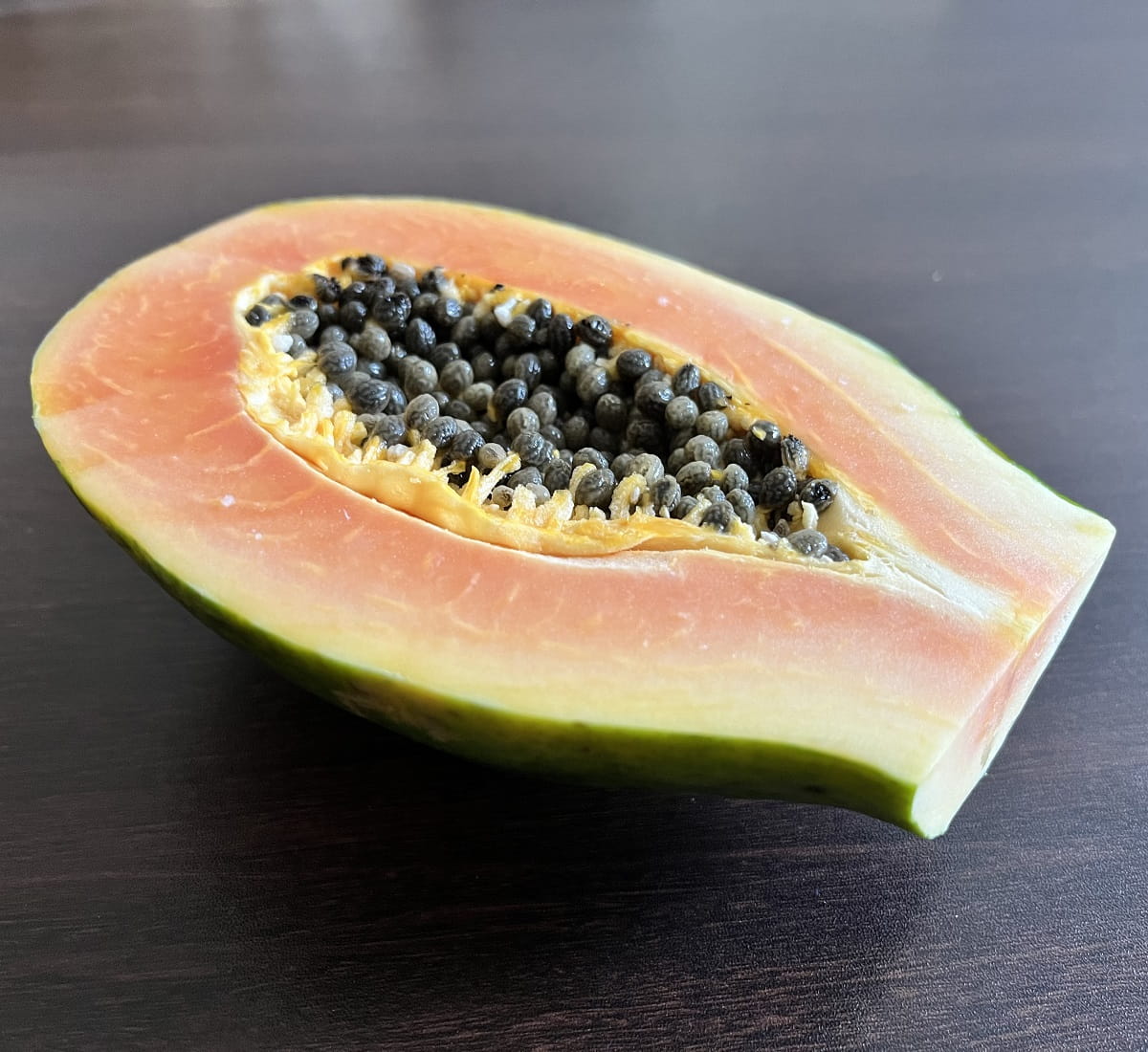
In hot, humid climates like Hawaii, papaya grows like a weed. The tall trees, somewhat resembling palm trees, often take root next to buildings and sidewalks and can produce fruit all year long.
Despite how well they grow here, papaya trees are actually native to Southern Mexico. They were introduced to Hawaii in the early 1800s. But it was the Solo cultivar introduced in the 1900s that would become the most popular for intentional planting.
Papayas are large pear-shaped fruits that start out dark green and ripen to yellow. They are often sold in their unripe form and used as vegetables in cooking. While these green fruits have very little flavor, the ripe yellow fruits are sweet and creamy with notes of pumpkin, cantaloupe, and mango.
Read my guide on how to eat papaya to learn more about how best to cut and eat this tasty Hawaiian fruit, including recipe ideas and practical tips.
12. Pineapple

When most people think of Hawaiian fruits, they think of pineapple. But you may be surprised to learn that pineapple is neither native to Hawaii nor a canoe fruit for the region.
Most likely, the fruit arrived in the early 1500s after a Spanish shipwreck brought specimens to shore on the Big Island. Pineapple became synonymous with Hawaii after Dole and other fruit producers began using the islands to grow the fruit in the early 1900s.
However it got there, pineapple remains a favorite of locals and tourists who visit the state. Its sweet but acidic flesh is eaten raw, included in fruit salads, roasted, and blended into smoothies. In addition to many vitamins and minerals, pineapple contains bromelain, a potent anti-inflammatory.
13. Rambutan
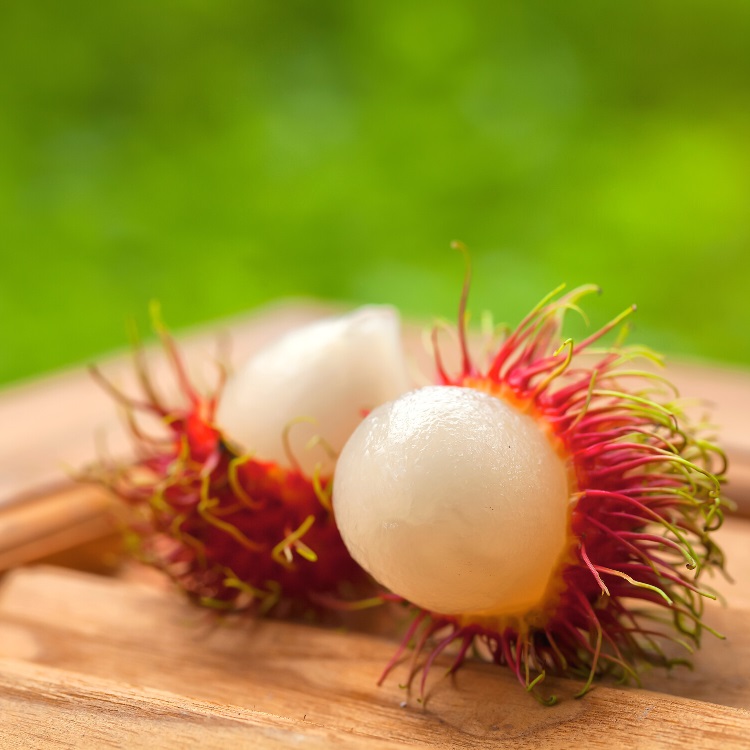
While the closely related longan and lychee fruits arrived with the wave of Asian immigrants to Hawaii, rambutan didn’t make it to the islands until the 1980s. But, like its cousins, it now grows in many gardens across the state.
This strange red fruit looks like a lychee in need of a haircut. The thick, red, leathery skin has tentacle-like hairs covering the entire surface. Inside is familiar translucent flesh surrounding a large black pit.
Unsurprisingly, cutting and eating rambutans is an easy and pleasant experience. The taste is similar to lychee, with some added tartness and floral notes. The two fruits have similar nutritional properties and are typically used in the same ways.
14. Star Fruit
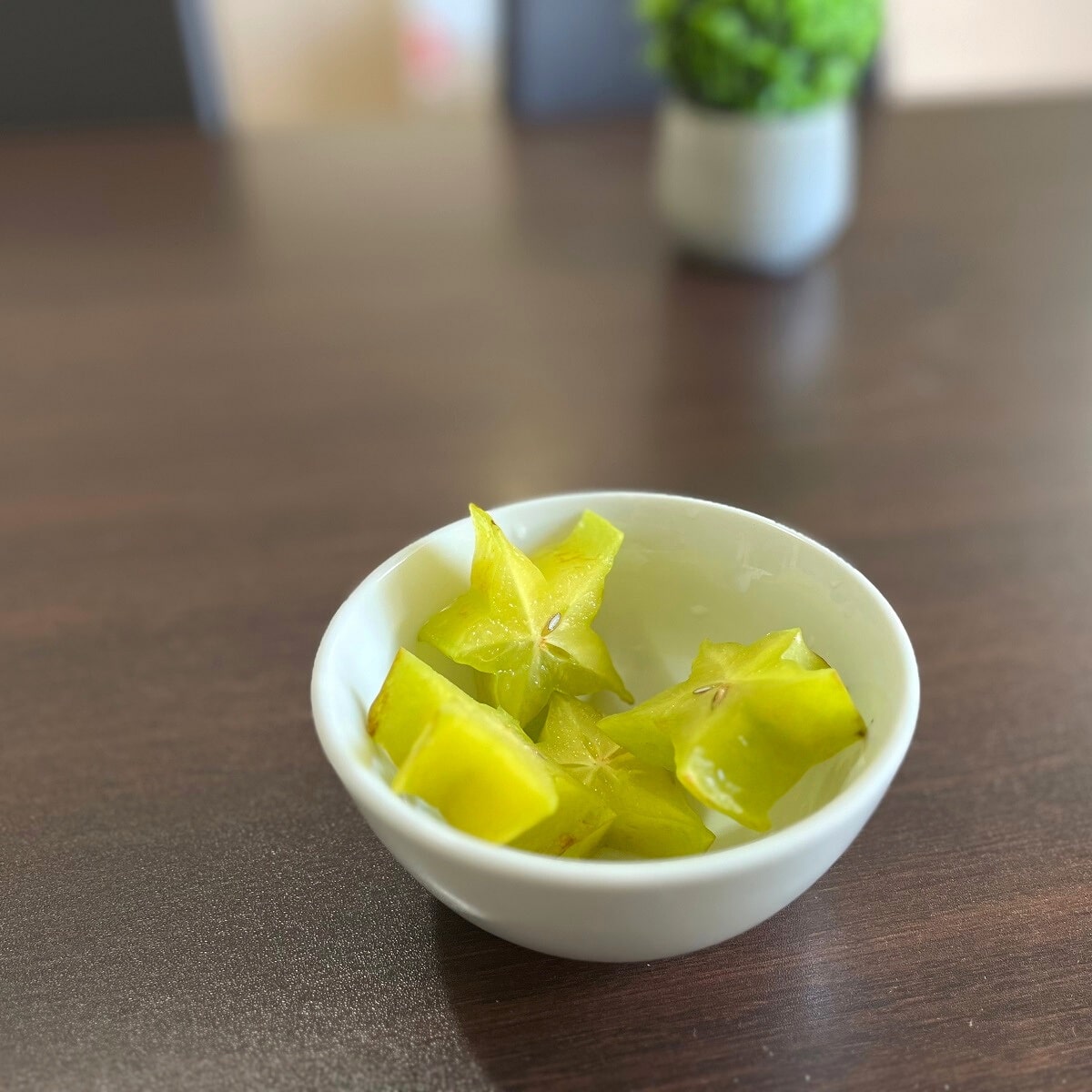
Also known as carambola, star fruits have a look all their own. They have a waxy yellow-green peel and five distinct ridges running from stem to blossom end. When cut into slices, each slice resembles a perfect little star.
This tropical fruit is native to Sri Lanka but will grow anywhere that stays warm enough. It was recently introduced to both Hawaii and Florida. In Hawaii, it can be found growing in yards, strip malls, and parks.
The carambola fruit has a crisp flavor that is equal parts sweet and tart. While eating the fruit whole is most common, the chewy seeds and waxy peel make it hard to fully appreciate the taste. To really enjoy this fruit, I recommend juicing it.
15. Ulu
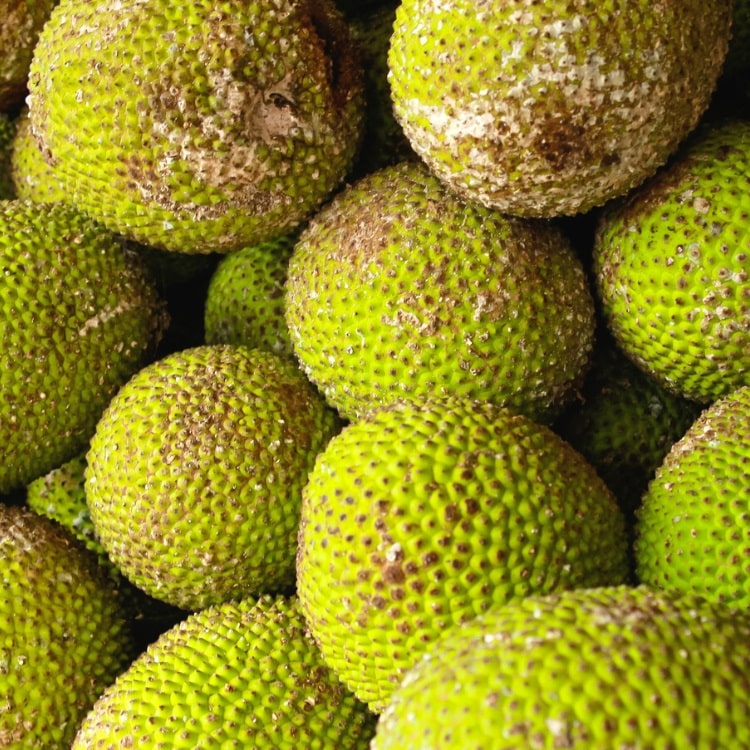
More commonly known as breadfruit, ulu is another Hawaiian canoe plant. But for a long time, the need for this staple fell away. While the large trees grow everywhere in Hawaii, few locals were still putting the huge fruits to use.
More recently, though, the popularity of breadfruit has seen a revival. Top chefs in Honolulu now feature this not-so-sweet fruit in everything from ulu fries to tacos to macaroni salad. Today, locals and tourists alike can enjoy breadfruit with the fervor of the first Hawaiians.
Ulus are large fruits, weighing up to 13 pounds. The skin is rough and warty and varies from light green to tan, depending on how ripe it is. When mature but unripe, ulu tastes starchy and bland and can be used in place of potatoes in most recipes. When overripe, it takes on a sweeter flavor and can be used more like a banana or sweet potato.
The name breadfruit comes from the fact that mature ulu tastes like warm bread when baked, and the renewed popularity of breadfruit owes everything to its versatility. Read my guide explaining how to eat breadfruit for more information about this popular fruit in Hawaii.
